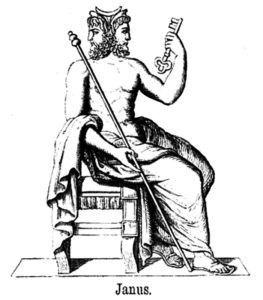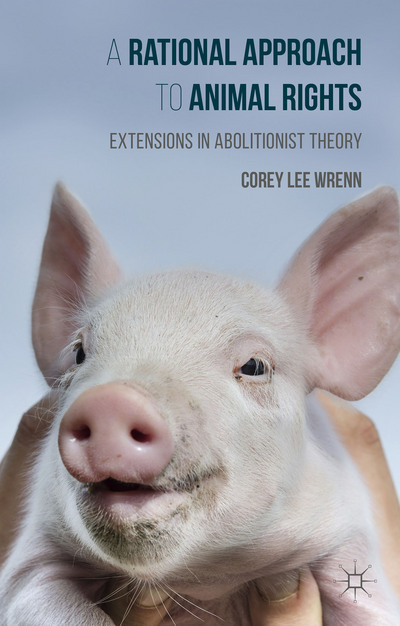Veganism as a Symbol
Social movements are not only concerned with identifying a social problem and prescribing solutions, but also with maintaining boundaries. Movements must delineate themselves from the mainstream that has been identified as problematic, but they must avoid constructing boundaries that are so rigid that they deter potential recruits and allies. Social movement theorist James Jasper refers to this balancing act as the “Janus Dilemma” as movements must be simultaneously inwardly and outwardly oriented. As a movement grows, differences inevitably arise in how problems should be defined and how best to solve them. Factions emerge as a result, and bring with them a new set of boundaries that activists must negotiate.
In my research of factionalism in the Nonhuman Animal rights movement, I have identified a number of symbols that are heavily politicized and contested in the social movement space. Symbols are ammunition in the crossfire between competing groups as they seek to define, protect, and breach boundaries. Veganism is one of the most vulnerable concepts in this intramovement battle for jurisdiction. What does it mean to be vegan? How important is veganism? Who is really a vegan, and who is not?
“Pure” Veganism
What I have found is that professionalized organizations expend considerable effort in denouncing veganism, what they generally refer to as a practice of “purity.” Oftentimes, they will frame this in individualist and ableist terms, describing “pure vegans” as “obsessive,” “angry,” or “self-absorbed.” Out of tune with reality, these “pure vegans” are alien from the more “practical” activist majority. As an alternative, large nonprofits advocate a variety of carnivorous diets that arbitrarily omit various animal bodies or products (vegeterianism, pescatarianism, veg*anism, plant-based, veggie, etc.).
Radical collectives are thus portrayed as unrealistic and self-righteous by contrast. Their relative powerlessness in the social movement space inhibits their ability to challenge the denigration of veganism or to defend their continued promotion of it.
Sociological thought acknowledges that social meanings do not necessarily correlate with objective reality. Instead, meaning is political in that it is constructed to serve particular interests. In this particular case, “vegan purity” is a a myth. It is not grounded in the daily reality of vegan life. The Vegan Society defines veganism as:
A philosophy and way of living which seeks to exclude—as far as is possible and practicable—all forms of exploitation of, and cruelty to, animals for food, clothing or any other purpose; and by extension, promotes the development and use of animal-free alternatives for the benefit of humans, animals and the environment. In dietary terms it denotes the practice of dispensing with all products derived wholly or partly from animals.
Notice that this definition emphasizes exclusion of animal products as far as is possible and practicable. No practicing vegan actually believes that purity is achievable. Most vegans take medicine, drive cars, use computers, eat vegetables grown in animal waste, or shop in nonvegan grocery stores. Because speciesism is systemic, a human cannot exist in this society without indirectly benefiting from nonhuman oppression (this is the same reason why all whites who live in a white supremacy are “racist” even if they actively reject racism).
Nonprofit and Radical Applications
If real-world vegans recognize these common sense limitations, then where does the pure vegan myth come from? My research supports that the myth is constructed to invisibilize radical discourse that threatens hegemonic power structures in the movement. As an organization abandons the grassroots model in favor of professionalization, it turns on veganism by reframing it as impractical. In short, veganism interferes with access to grants. Even organizations that avidly touted the importance of veganism as a grassroots group would come to view it as a matter of “personal purity” after incorporating as a nonprofit and becoming dependent on fundraising.
Nonprofits are not the only players. I have sometimes observed radical activists feign an adherence to impossibly pure veganism. Among radicals, the pure vegan myth is employed most frequently to advance one’s own status or to undermine that of others. Purity is employed not to advocate for the interests of animals, but to protect boundaries and subdue contenders.
For instance, an American vegan society not long ago recommended Kellogg’s Corn Flakes in its vegan starter guide, innocently unaware that most commercial cereal products are fortified with vitamins sourced from animal bodies. A fact of vegan life is that “going vegan” is a lifelong process. Nonhuman oppression is so thoroughly saturated in our social worlds, we must be diligent in checking ingredients and challenging habitual consumer trust. It was an honest mistake and a real a shame, too, since corn flakes were invented in the 19th century to transition flesh-eaters into vegetarianism. The offending organization was roundly criticized for the accident by other radical collectives, but the assault had nothing to do with Nonhuman Animals, and everything to do with destroying the organization’s legitimacy as a contender in the radical space.
Veganism is not just a strategy for the emancipation of other animals, but a means of protecting jurisdiction. Professionalized organizations engage myths of vegan purity with hopes of appealing to elite-run foundations that are obviously less likely to award grants to nonprofits determined to undermine elite-run speciesist industries. Nonprofits thus distance themselves from radical collectives and their vegan agenda. As nonprofits trade ideals for resources, their power grows and reduces resources available for others. As a result, radicals disingenuously double down on the vegan myth in their struggle for survival in a movement that is increasingly dominated by large nonprofits.
Readers can learn more about the politics of the Nonhuman Animal rights movement in my 2016 publication, A Rational Approach to Animal Rights. Receive research updates straight to your inbox by subscribing to my newsletter.



